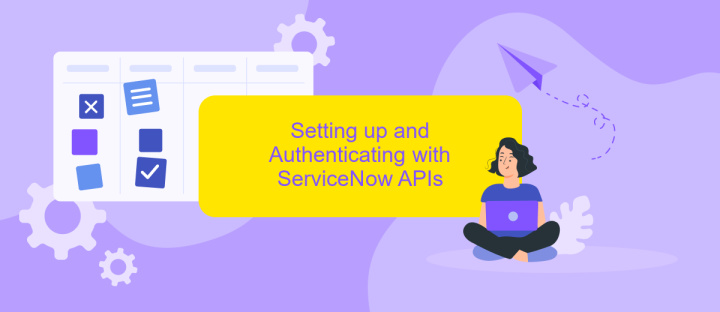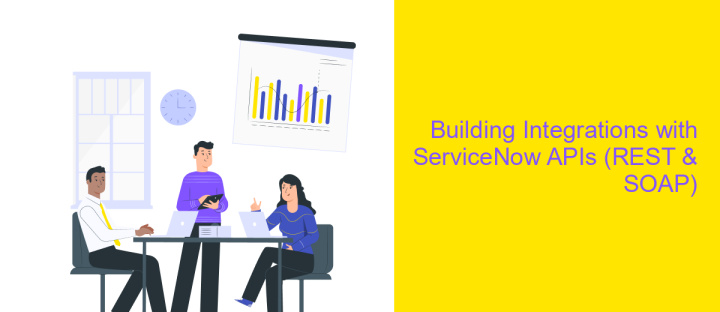ServiceNow Integration API
The ServiceNow Integration API offers a robust solution for seamlessly connecting ServiceNow with various external applications and systems. Designed to enhance workflow efficiency and data synchronization, this API empowers organizations to automate processes and improve service delivery. With its comprehensive set of tools and capabilities, businesses can easily customize and extend their ServiceNow platform, ensuring a more integrated and streamlined operational environment.
Introduction to ServiceNow Integration APIs
ServiceNow Integration APIs are essential tools for businesses seeking to enhance their workflow automation and streamline operations. These APIs enable seamless communication between ServiceNow and other enterprise systems, allowing data to be shared and synchronized effortlessly. By leveraging these integration capabilities, organizations can improve efficiency, reduce manual processes, and ensure data consistency across platforms.
- Facilitates seamless data exchange between ServiceNow and third-party applications.
- Supports various integration methods, including REST, SOAP, and JDBC.
- Enables automation of business processes and workflows.
- Enhances real-time data synchronization and consistency.
- Offers robust security features to protect data integrity.
Incorporating ServiceNow Integration APIs into your IT infrastructure can significantly boost productivity and operational agility. By automating routine tasks and ensuring that data is accurately and consistently updated across systems, businesses can focus more on strategic initiatives. This integration not only reduces the risk of errors but also provides a scalable solution that can adapt to evolving business needs. As a result, organizations can achieve a higher level of service delivery and customer satisfaction.
Types of ServiceNow APIs and Use Cases

ServiceNow offers a variety of APIs designed to enhance integration capabilities and streamline workflows. The REST API is one of the most widely used, allowing developers to interact with ServiceNow data using standard HTTP methods. This API is ideal for integrating ServiceNow with external applications, enabling seamless data exchange and automation of processes. Another popular option is the SOAP API, which provides robust capabilities for more complex integrations, especially in environments where SOAP is already in use. These APIs empower organizations to customize their ServiceNow experience and improve operational efficiency.
Use cases for ServiceNow APIs are diverse, ranging from automating IT service management tasks to integrating with third-party platforms like ApiX-Drive. With ApiX-Drive, businesses can effortlessly connect ServiceNow with hundreds of other applications, enabling real-time data synchronization and reducing manual effort. This integration is particularly useful for teams looking to enhance their productivity by automating routine tasks and ensuring that information flows smoothly across systems. By leveraging these APIs, organizations can tailor their ServiceNow environment to better meet their unique business needs.
Setting up and Authenticating with ServiceNow APIs

To effectively utilize ServiceNow APIs, setting up and authenticating properly is crucial. Begin by ensuring you have the necessary permissions and roles within your ServiceNow instance. This involves having an active ServiceNow account with API access rights. Understanding the authentication methods supported by ServiceNow is essential for seamless integration.
- Log into your ServiceNow instance and navigate to the "System Web Services" section.
- Choose the "REST API Explorer" to familiarize yourself with available APIs and endpoints.
- Generate an API key or use OAuth 2.0 for authentication. For OAuth, register your application in the "Application Registry" and obtain client credentials.
- Configure your HTTP client to include the necessary headers, such as 'Authorization' with your token, and 'Content-Type' for JSON data.
- Test your connection by making a sample API call to verify your setup and authentication.
Once authenticated, you can access a wide range of functionalities offered by ServiceNow APIs. Proper setup and authentication not only ensure secure access but also enhance the efficiency of your integration processes. Always refer to the latest ServiceNow documentation for updates on API capabilities and security practices.
Building Integrations with ServiceNow APIs (REST & SOAP)

Integrating with ServiceNow APIs, whether REST or SOAP, offers a robust way to enhance your IT service management capabilities. These APIs enable seamless communication between ServiceNow and other systems, facilitating automation and data exchange. REST APIs are particularly popular due to their simplicity and efficiency, allowing developers to interact with ServiceNow using standard HTTP methods.
SOAP APIs, on the other hand, provide a more structured approach, utilizing XML-based messaging. They are ideal for complex integrations requiring stringent security and transactional reliability. Both API types support a wide range of operations, from retrieving records to creating and updating data within the ServiceNow platform.
- REST APIs: Use JSON format, ideal for lightweight integrations.
- SOAP APIs: Utilize XML, suitable for enterprise-level integrations.
- Authentication: Both APIs support OAuth and Basic Authentication.
- Data Operations: CRUD operations are supported in both APIs.
When building integrations, consider the specific needs of your organization. REST APIs are generally easier to implement and maintain, making them suitable for most use cases. However, if your integration requires advanced security features and reliable message delivery, SOAP APIs may be the better choice. Always ensure that your API usage aligns with ServiceNow's best practices to maintain system performance and security.


Best Practices and Troubleshooting for ServiceNow API Integrations
When integrating with the ServiceNow API, it's crucial to follow best practices to ensure smooth operation and maintain security. Start by thoroughly understanding the API documentation and defining clear objectives for your integration project. Use OAuth 2.0 for secure authentication and regularly update your API credentials to prevent unauthorized access. Implement error handling to manage unexpected issues without disrupting service. Additionally, maintain a log of API interactions for troubleshooting and audit purposes. Consider using services like ApiX-Drive to simplify the integration process with its user-friendly interface and automation capabilities, which can save time and reduce errors.
Troubleshooting ServiceNow API integrations involves systematic diagnosis of potential issues. Begin by verifying network connectivity and ensuring that all endpoints are correctly configured. Check API request headers and parameters for accuracy, as incorrect data can lead to failed calls. Utilize ServiceNow's API explorer for testing and debugging API requests in a controlled environment. Monitor the ServiceNow instance for any error messages or logs that can provide insights into the problem. If issues persist, consult the ServiceNow community forums or support for additional guidance. Consistent monitoring and proactive maintenance will help in identifying and resolving issues promptly.
FAQ
What is ServiceNow Integration API?
How can I authenticate API requests in ServiceNow?
Can I automate ServiceNow integrations with third-party tools?
What are the best practices for error handling in ServiceNow API integrations?
How do I ensure data security when using ServiceNow Integration API?
Apix-Drive will help optimize business processes, save you from a lot of routine tasks and unnecessary costs for automation, attracting additional specialists. Try setting up a free test connection with ApiX-Drive and see for yourself. Now you have to think about where to invest the freed time and money!

